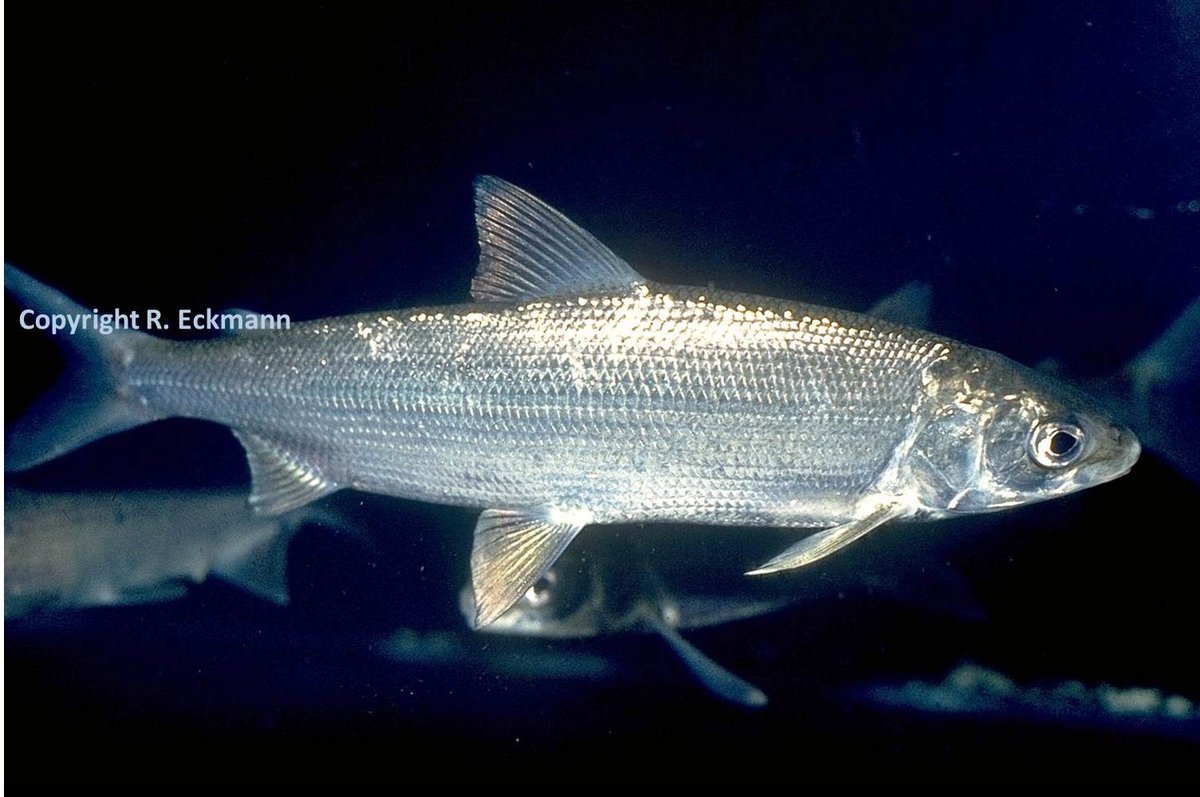Adaptation, coevolution and environmental change

Trophic changes of lakes: effect on the biodiverisity of whitefish
Here we are interested in the effect of anthropogenic impact (eutrophication and re-oligotrophication) of lakes on whitefish diversity. We could show that due to the decrease of nutrients in Lake Constance and the concomitant diversification of prey niches (planktonic and benthic) the whitefish biodiversity that collapsed into a hybrid swarm during the time when the lake was eutrophic is now re-establishing. In this project we combined genetic analysis with landmark based geometric morphometrics and the analysis of stable isotope values of carbon (δ13C) and nitrogen (δ15N) to investigate phenotypic and genetic differentiation and to evaluate the trophic feeding niches of different whitefish forms.
In a follow-up collaborative project we combined ecological with genomics and transcriptomics data and found that one whitefish species "gangfisch" is increasing its ecologically functional diversity. In fewer than 10 generations, gangfisch evolved a greater range of gill raker number to utilize a broader ecological niche. Only a few genes are responsible for this variation in gill raker number. We found several co-expressed gene modules and genes showing signals of positive selection that were associated with gill raker number and body shape. These were enriched for biological pathways related to trophic niche expansion in fishes (Jacobs et al. 2019)
Hirsch PE, Oppelt C, Eckmann R, Behrmann-Godel J. (2013). Phenotypic and genetic divergence within a single whitefish form - detecting the potential for future divergence. Evolutionary Applications (doi: 10.1111/eva.12087)
Jacobs A, Carruthers M, Eckmann R, Yohannes E, Adams CE, Behrmann-Godel J, Elmer KR. (2019). Rapid niche expansion by selection on functional genomic variation after ecosystem recovery. Nature Ecology and Evolution 3:77-86.
Parasite-host coevolution under warming conditions
Temperature increase, due to climate warming, will impact on host-parasite interactions and coevolution. Genes like the MHC that play key roles in host susceptibility are thereby expected to be major targets of selection by parasites. We study how warming over 35 years in an artificial Swedish lake changes the allelic composition resulting in a decrease in allelic richness of MHC class II genes in an enclosed fish population compared to a control population in the Baltic Sea. The two most common MHC alleles showed cyclic patterns (Red Queen dynamics) indicating ongoing parasite-host coevolution. No change and no signs of genetic bottleneck was found using neutral markers (microsatellites). Our results strongly suggests that the dramatic change in MHC is due to selection by parasites.
Björklund M, Aho T, Behrmann-Godel J. (2015). Isolation over 35 years in a heated biotest basin and selection on MHC class IIß genes in the European perch (Perca fluviatilis L.). Ecology and Evolution Apr;5(7):1440-55.
